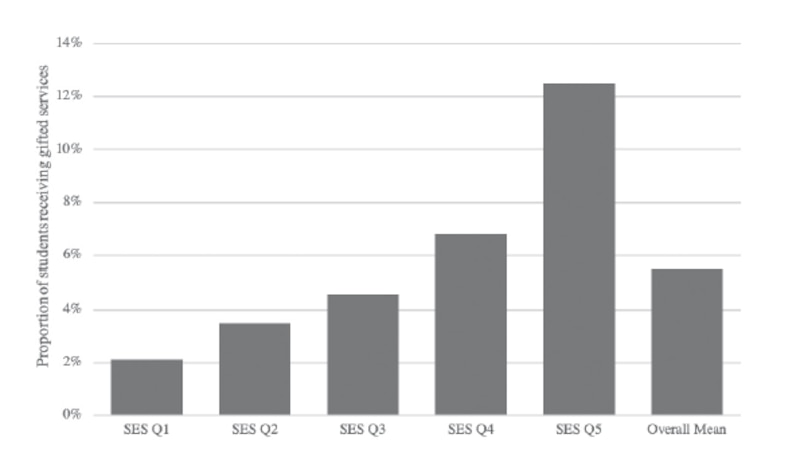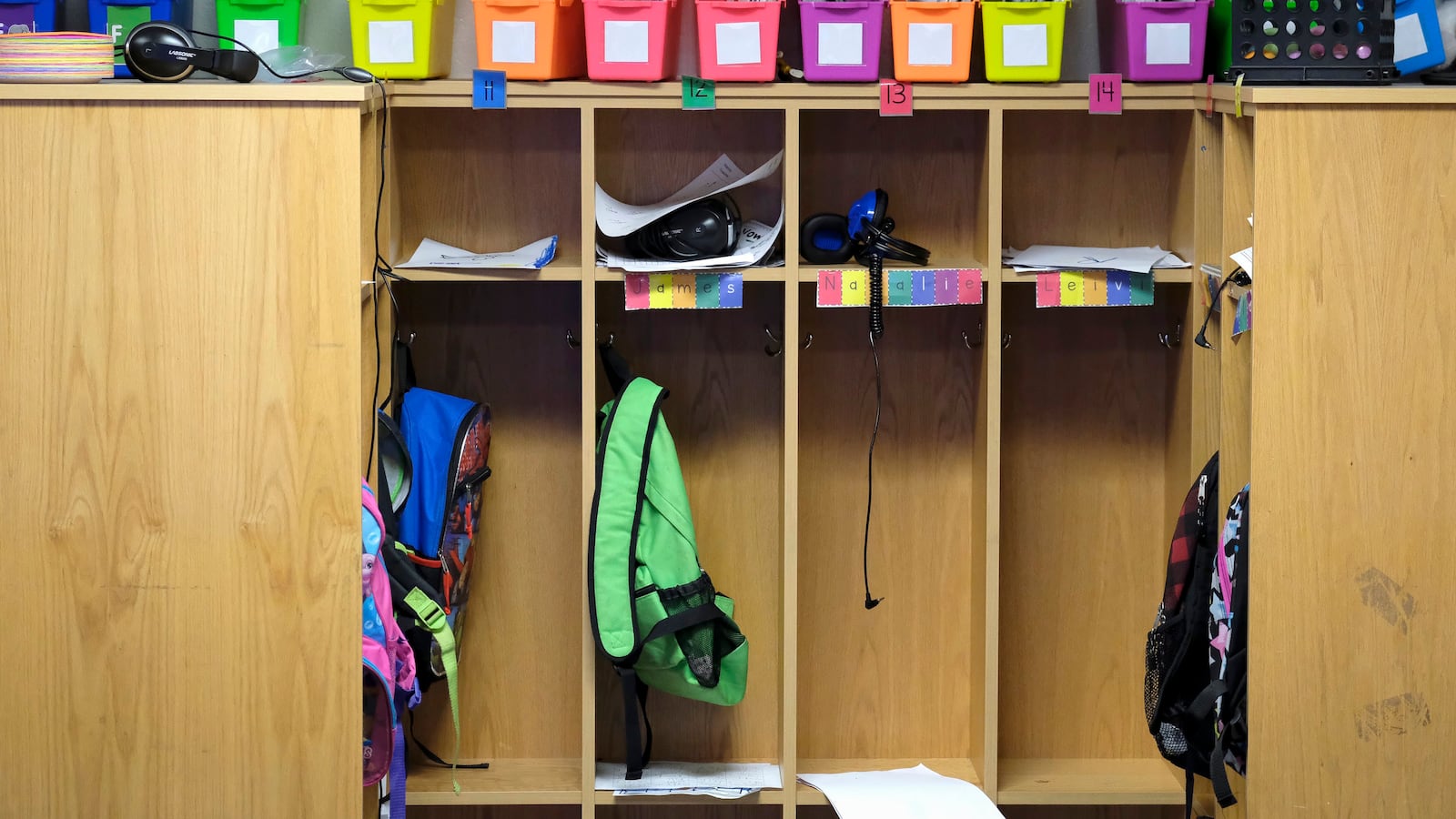Elementary school students from higher-income families are far more likely to land in gifted programs than their lower-income classmates, even if those students go to the same school and show similar levels of achievement in math and reading, says a new study.
In fact, across America, a student from a family in the top fifth of economic and social status is twice as likely to receive gifted services than an equally achieving peer in the bottom fifth.
And the gap swells to almost seven times more likely when examining all students, say researchers from Vanderbilt University and the University of Florida.
The findings, published this week in the Harvard Educational Review, aren’t a surprise. Previous research using data in multiple states and districts have come to similar conclusions. But it’s the first study to use national data and also to factor in achievement results.
The research highlights the challenges of getting gifted services to talented students based on students’ personal merits — not on family advantages, biased referral or evaluation processes, or questionable policies.
The issue is important because high-achieving, low-income students who are being overlooked for gifted programs also have the most to gain by participating, according to previous research. Meanwhile, advantaged students are getting outsized access to programs that are linked to important benefits such as greater engagement in school, increased motivation to learn, pathways to improved academic performance, and self-efficacy, or the idea that “I’m good at school.”
“There are a lot of districts around the country that are taking this problem very seriously,” said Jonathan Plucker, president of the board for the National Association for Gifted Children. “This study doesn’t tell us a ton that we didn’t already know, but it’s another reminder that we’ve got to stop seeing low-income students as untalented, which is a huge mindset problem.”
The data — drawn from a nationally representative sample of more than 21,000 students who entered kindergarten in 1998, along with a second group of students who started school in 2011 — allowed researchers to track and compare students across different states as well as those attending the same school. Those same-school comparisons suggest that gaps in service can’t be written off as a lack of local access to schools with gifted programs.
“This isn’t just a neighborhood problem,” said Jason Grissom, one of the authors and an associate professor of public policy and education at Vanderbilt’s Peabody College of Education and Human Development. “By comparing students within schools, we looked at a high-income kid who’s sitting in the same classroom as a kid with similar characteristics but just from a lower income family, and the system was less likely to identify that lower income kid for gifted services.”
The study examined access to gifted programs based on students’ family income, parental education, and occupational prestige, not just the traditional threshold of eligibility for free and reduced price lunch. That approach provided a deeper and wider look at the role of socioeconomic status and revealed some important divergences.
“There’s a real separation when you look at kids in the top 20% of socioeconomic status and everyone else,” Grissom said.

In addition, higher socioeconomic status appears to benefit white or Asian students more in the gifted selection process than those who are black or Hispanic.
Federal law acknowledges the unique needs of gifted children but does not require public schools to offer them special services. That’s a local responsibility driven by local leadership, who under a 2015 federal education law may choose to use Title I funds to pay for such programs. But with that latitude comes a wide variation from district to district in quality, intensity, and access of gifted programs, making delivery less likely for talented students who live in poverty, are English learners, have disabilities, or are from underserved racial and ethnic groups.
In New York City, for instance, gifted education has been viewed as a magnet for enticing middle-class and white families to enroll in the public school system instead of fleeing for the suburbs or choosing private school. That dynamic recently led one panel to recommend eliminating gifted programs altogether in the nation’s largest school district to help integrate New York City schools — a suggestion that bristles groups like the National Association for Gifted Children.
“A very common urban response is to get rid of the whole thing, but I don’t think that removing opportunity for students is the best path forward for addressing inequity,” said Plucker.
He’d rather see districts turn to universal screening systems that remove teacher bias and parental maneuvering from the referral process by assessing all students for giftedness.
Grissom said districts that have tried universal screenings have vastly increased participation in gifted programs for low-income students and also for students of color. One example is Metropolitan Nashville Public Schools, which piloted that approach with second-graders in 2017 but dropped the screenings because it was expensive.

“Testing companies are going to charge you for each kid that’s assessed, and there’s a cost to that. Districts considering universal screening often have decided that the cost is not worth the benefit,” Grissom said.
A less expensive option is to use an existing test to screen students but, for now, most districts are focusing on training teachers on best practices to identify gifted students.
“Districts that recognize these gaps have tried to train teachers better, especially at the elementary level, on what the signs of giftedness are and how that might show up in diverse student populations — to recognize that kids from different socioeconomic groups might express giftedness in different ways,” said Grissom, who conducted the most recent study with Christopher Redding at the University of Florida and Vanderbilt’s Joshua F. Bleiberg.
“We just don’t have good evidence on whether that kind of training is effective or not,” he added.

